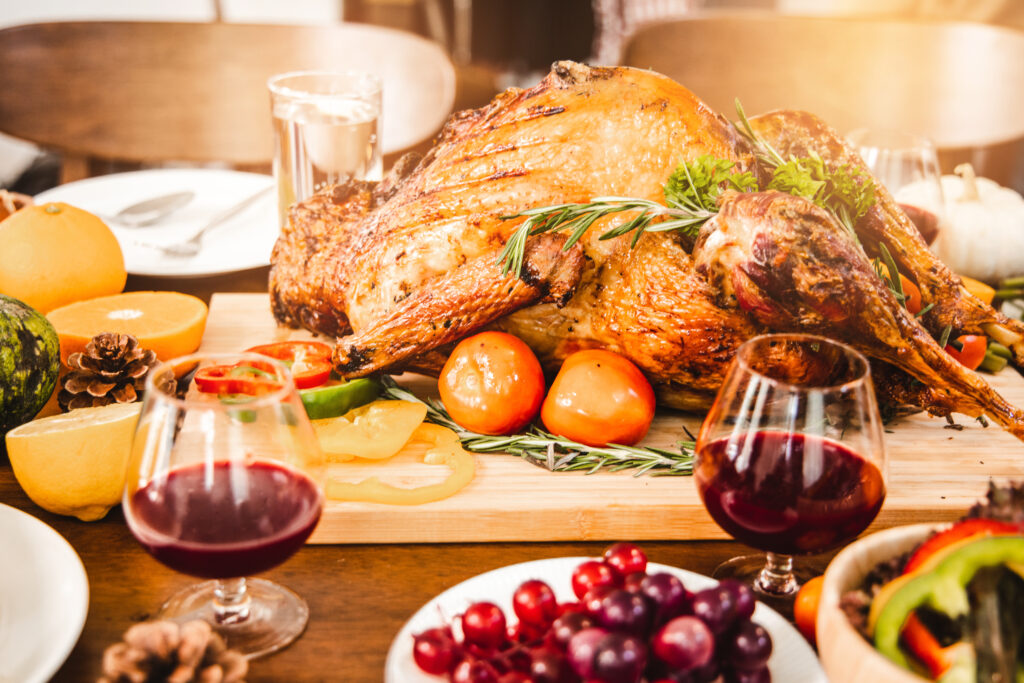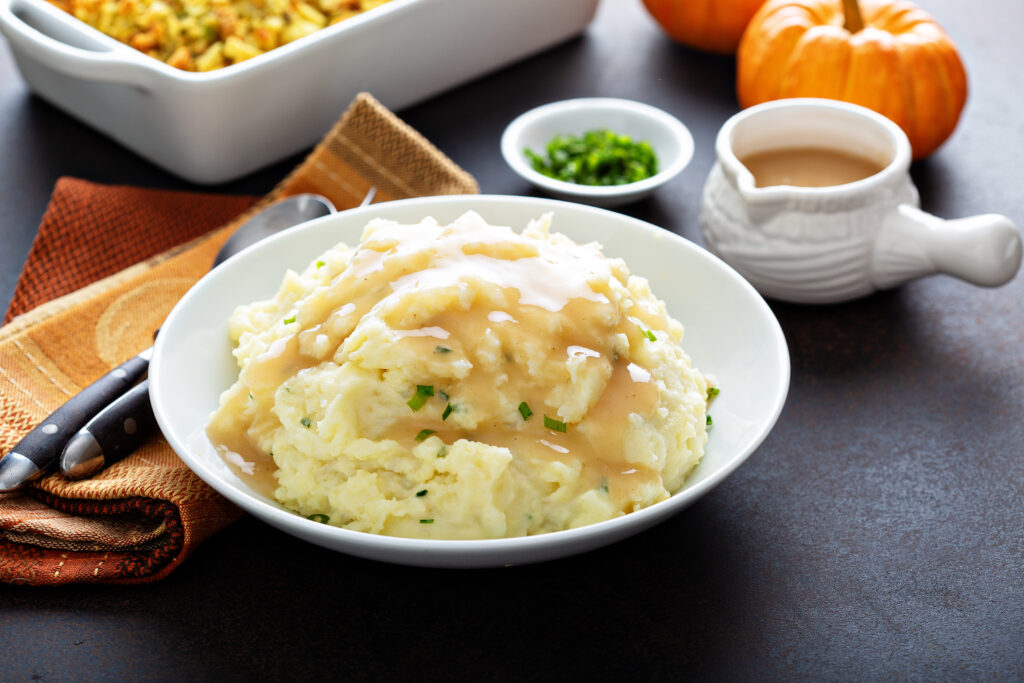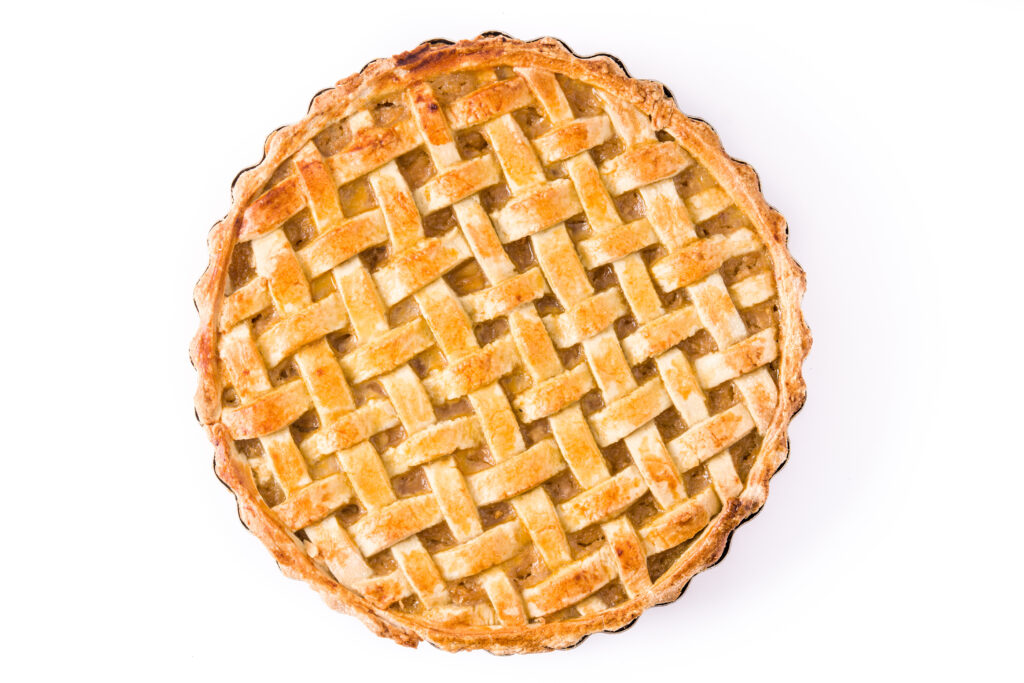
With Thanksgiving just around the corner, kitchens across the country will soon be alive with the sights, smells and sounds of cooking. But what if we dove deeper into those recipe books and looked beyond the instructions? You might find you’re more than just a cook; you’re quite the chemist!
Inspired by the popular show Lessons in Chemistry, an adaptation of Bonnie Garmus’s bestselling novel, cooking is presented as applied science, encouraging viewers to think critically about their cooking and the chemical reactions that create the flavors and textures they love. In this blog, we’ll explore the chemistry behind Thanksgiving cooking, revealing how different techniques bring out the best in each dish.
Chemistry in the Kitchen: Lessons in Chemistry
In Lessons in Chemistry, the main character, Elizabeth Zott, treats cooking as a science, combining culinary processes with the principles of chemistry. Rather than simply following recipes, Zott explores the “why” behind each step, showing how different ingredients, measurements or techniques might transform your food on a molecular level to create the aromas, flavors and textures we love.
This chemistry-focused view of cooking brings a new level of appreciation to preparing a Thanksgiving meal. Each dish—whether it’s turkey, mashed potatoes, gravy or pie—undergoes a multitude of scientific transformations that turn basic ingredients into family favorites.
A Look into Key Cooking Reactions
In the spirit of Zott’s scientific approach, here’s a breakdown of some chemical reactions that make Thanksgiving dishes something to crave year-round:
Turkey Roasting, Spatchcock-Style and the Maillard Reaction
- Spatchcocking, or butterflying the turkey, involves removing the bird’s backbone, allowing it to lay flat while cooking. This technique (a personal favorite of my coworker Sam) increases the surface area exposed to heat, allowing a more quick, evenly cooked turkey (4). Additionally, this enhances the area subject to the Maillard reaction—a chemical process between amino acids and reducing sugars at high temperatures—that creates the beautiful golden-brown color and rich flavor that defines roasted turkey through dehydration, condensation and compound rearrangement (2). The Maillard reaction thrives in dry heat (between 280°F and 330°F), as moisture can halt the reaction by preventing the surface temperature from climbing above water’s boiling point (1). This makes basting a delicate balance; it helps keep the meat from drying out, but too much moisture can prevent browning until the moisture evaporates (3). Just the right amount of heat and dryness, combined with occasional basting, unlocks the complex flavors and aromas that embody Thanksgiving.
- Additional Tips: Because the Maillard effect is influenced by temperature, time and pH, raising the pH with baking soda can increase flavor, while adding an acid or increasing the temperature can make a crisper crust (2). Want both? Try frying in fats.
Mashed Potatoes and Starch Gelatinization

- Ever wonder how your thanksgiving mashed potatoes get so smooth? The creaminess of mashed potatoes comes from a process called starch gelatinization, which begins at around 130°F and completes by about 185°F. Starch, a carbohydrate stored in potatoes, is made up of tiny granules called starch grains that come in different shapes and sizes (5). When potatoes are cooked, these starch granules absorb water, swell and eventually burst, creating a soft and creamy texture. Potatoes with a higher starch content, or large starch granules (like Russets), tend to make that ideal, lighter and fluffier mashed potato texture. Note however, if potatoes are overcooked or over-worked, the cell walls can break down too much, causing gelatinized starch to leak out and turn the mixture gluey (5)—a classic Thanksgiving kitchen mishap!
- Additional Tips: If adding milk, it’s best to use warm milk rather than cold, as cold milk can create uneven temperature distribution in the mixture, leading to lumps in your mashed potatoes. If you add butter, make sure to add it before milk or other additives, as butter can provide a protective coat on the starch granules preventing them from absorbing too much water and becoming gummy (5). And beyond the science—a little butter and milk never hurt anyone’s taste buds!
Gravy Emulsification
- The perfect Thanksgiving gravy involves both thickening and emulsifying processes to achieve its smooth texture. Gravy usually begins with a roux—a blend of fat (such as butter or drippings) and flour—that thickens the mixture through starch gelatinization (see mashed potatoes above), creating a smooth, thickened base. Once the roux is ready, gradually whisking in warm broth or other liquids disperses fat droplets into the liquid, forming an emulsion (a stable blend of fat and water). Constant stirring and moderate temperature help stabilize the emulsion, preventing it from separating into oily layers (6).
- Additional Tips: Adding a small amount of vinegar or mustard can further stabilize the emulsion, while finishing with a bit of butter can add gloss and enhance the flavor profile of your gravy (6).
Pie Crust and Gluten Development

- A flaky pie crust is my Thanksgiving favorite, achieved through limiting gluten formation and incorporating fat strategically during the preparation process. When flour meets water, gluten forms and gives your pie crust structure—but too much gluten is the villain responsible for a tough crust. Gluten formation is influenced not just by water but also by time and mechanical agitation (e.g., kneading), so working the dough as little as possible helps reduce gluten development. Mixing in butter in different sizes (almond- and pea-sized pieces) has also been shown to create more airy pockets as it bakes—giving the crust its flakiness (7).
- Additional Tips: For a golden crust with rich flavor, brush with an egg wash and bake at 375°F or higher. While the Maillard reaction (as described above) contributes to browning, the sugars in the egg yolk play a dominant role in achieving that appealing color and flavor. Also consider swapping some water for vodka; because alcohol doesn’t promote gluten formation it results in a more tender crust (7)—but not too much or you’ll taste it!
Thanksgiving Chemistry, From the Lab to Your Table
So, do you believe you’re a chemist yet? As you begin your Thanksgiving cooking adventure, take a moment to think like Elizabeth Zott in Lessons in Chemistry. Each dish you prepare—whether it’s turkey, mashed potatoes, gravy or pie crust—is a small experiment you can taste, reflecting the techniques you’ve mastered. So, embrace the science, savor the flavors and have a happy Thanksgiving!
Feel free to add some of your favorite thanksgiving tips and tricks bellow.
References
- Guglielmi, G. (2017). How to science up your Thanksgiving dinner. Science. https://doi.org/10.1126/science.aar5569
- Jenner, M. (2024, January 10). The Maillard Reaction — What is it? And Why Should you Care? [Review of The Maillard Reaction — What is it? And Why Should you Care?]. https://www.foodfirefriends.com/maillard-reaction/
- Kita. (2024, June 12). What is the Maillard Reaction? Girl Carnivore. https://www.foodfirefriends.com/maillard-reaction/;
- López-Alt, J. K. (2019, September 18). The Food Lab Video Series: The Science of Spatchcocking [Review of The Food Lab Video Series: The Science of Spatchcocking]. Serious Eats. https://www.seriouseats.com/the-food-lab-video-series-roast-chicken
- Potato Chemistry in Cooking | Idaho Potato Commission. (n.d.). Idaho® Potato Commission. https://idahopotato.com/dr-potato/potato-chemistry-in-cooking
- The Chemistry Behind Perfect Gravy: A Culinary Alchem – Urban Remedy. (2024, January 13). Urbanremedy.com.au. https://urbanremedy.com.au/the-chemistry-behind-perfect-gravy-a-culinary-alchem/
- Times, P. D. for T. N. Y. (n.d.). Science Builds a Better Pie. Archive.nytimes.com. ;
Latest posts by Shannon Sindermann (see all)
- What 32,000 3D Spheroids Revealed About Culture Conditions - April 15, 2025
- Can Fungi Help Clean Up Environmental Contaminants? - March 20, 2025
- Reprogramming T Cells with DCA: A Metabolic Breakthrough - February 7, 2025
